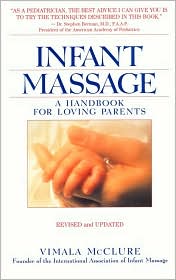Today’s book review is a little different. I am recommending Betsy Keefer’s book,
Telling The Truth to Your Adopted or Foster Child: Making Sense of The Past but instead of reviewing it I am going to feature her list “The Ten Commandments of Telling”, which has been floating around adoption-bloggy land for some time now but bears repeating in every venue. I think it will help everyone to see what a blessing her book can be to the adoptive family no matter the age of our children. Even if you have no intention of buying this book and have never read an adoption book in your life –
please read this list!!

I. Do not lie.
This is a no-brainer, right? It’s your child’s story, and they are entitled to have it told straight. Omissions are OK if developmentally necessary (but see IV), but no lies. Kids have a way of finding out the truth, and then we’ve broken trust. Adopted kids tend to snoop more than non-adopted kids (curiosity about their background), so it’s not at all unusual for them to ferret out the truth before they are told.
II. Tell information in an age-appropriate way.
Of course, but how exactly? Betsy gives the example of telling a child the very hard truth that their original mother was a drug-addicted prostitute, and the child was removed from her care because she left her alone and neglected her. This needs to be done at different ages, building to the whole truth. For instance:
Age 3: Your first mommy couldn’t take care of any baby. She wasn’t ready to be a mommy.
Age 7: Your first mommy had trouble taking care of herself. She wasn’t able to take care of any baby. Neighbors were worried about you and called the social worker.
Age10: Your first mom made a bad decision and started using drugs. She couldn’t think well when she was using drugs and made even more bad decisions. Sometimes she left you alone. That wasn’t safe for you.
Age 12: Your first mom felt sick when she couldn’t get drugs. She could not hold a job. She needed money, so she sold herself through prostitution. She left you alone when she met customers or bought drugs. Neighbors called the social worker, and a judge agreed you needed a safe home to grow up in.
III. Allow the child to be angry without joining in.
You know how you can say mean things about your brother, but no one else can? Same goes when your child is angry with their first parents. Acknowledge the hurt and anger without bad-mouthing the first parents.
IV. Share all information by the time the child is 12.
It’s important to give the child all the information before the teenage years. That’s the key period for identity formation, and they need all available information before that point. And, by the teenage years, kids don’t believe a word their parents say! So you better get the information out while they are still listening.
V. Remember the child knows more than you think.
See snooping, above! Not to mention, if anyone in the family knows it, chances are your child has overheard parts of the story and are filling in the blanks on her own. Or someone else — older siblings, school friends who heard something from their parents — is telling your child. And they are likely not doing it in a kind and understanding way. Even if they are, the game of “rumour” should remind you how skewed the story will be by the time your child hears it.
Also, your child is probably developmentally ready to hear parts of the story before you think they are. Although parents are experts in their child, their reluctance to share hard truths and desire to protect the child might lead to underestimating their ability to understand.
VI. If information is negative, use a third party professional.
Choose wisely, interview beforehand, and discuss parameters of telling. You MUST STAY when the therapist tells, so that you can offer your child emotional support, so you know the details shared to clarify later anything your child missed or misunderstood, so you can demonstrate to your child than even though you know “the worst” about them, you still love them and are there for them.
VII. Use positive adoption language.
It’s important to model positive attitudes about adoption, and that starts with language. Your child relies on you to teach them that language, too.
VIII. Don’t impose value judgments.
Even horrific information needs to be conveyed in a neutral manner. Conveying negative judgments of original family or their actions will be seen as a rejection by adopted children. “If you don’t like my biological parents, you don’t like me.”
And what we see as terribly negative information may not be that for the child. Betsy was called in by a family to share the fact that their son was conceived as a result of rape. Everyone was surprised that the boy was actually happy to hear it — he had internalized ideas of his first mother as promiscuous, and was glad to know it wasn’t so.
IX. Initiate conversation about adoption.
Waiting until kids ask questions isn’t adequate. Look for opportunities to raise the issue of adoption:
1. Watch movies/programs with adoption themes with your child and draw parallels and contrasts to your child’s story; use as a springboard to further discussion;
2. Use key times of the year (birthday, Mother’s Day, adoption day) to let your child know that you are thinking about their original family;
3. Comment on your child’s positive characteristics and wonder aloud whether they got that characteristic from biological family members;
4. Include the biological family when congratulating your child for accomplishments — “I’m sure they would be as proud as we are.”
X. The child should be in control of his story outside the family.
Intimate details should only be shared at your child’s discretion. Make sure, though, that your child realizes the difference between “private” and “secret.” Secrets connote shame, and you don’t want your child to think negative facts are shameful.






